
The First Ecumenical Council of the Vatican, commonly known as the First Vatican Council or Vatican I, was the 20th ecumenical council of the Catholic Church, held three centuries after the preceding Council of Trent which was adjourned in 1563. The council was convoked by Pope Pius IX on 29 June 1868, under the rising threat of the Kingdom of Italy encroaching on the Papal States. It opened on 8 December 1869 and was adjourned on 20 September 1870 after the Italian Capture of Rome. Its best-known decision is its definition of papal infallibility.
The terms Old Catholic Church, Old Catholics, Old-Catholic churches, or Old Catholic movement, designate "any of the groups of Western Christians who believe themselves to maintain in complete loyalty the doctrine and traditions of the undivided church but who separated from the see of Rome after the First Vatican council of 1869–70".
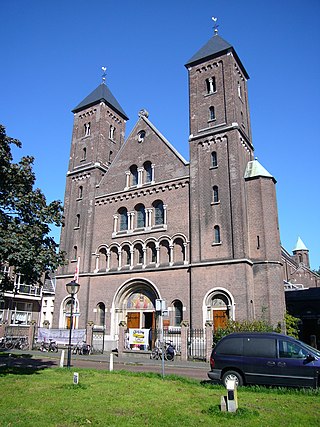
The Old Catholic Church of the Netherlands, sometimes Jansenist Church of Holland, is an Old Catholic jurisdiction originating from the Archdiocese of Utrecht (695–1580). The Old Catholic Church of the Netherlands is the mother church of the Old Catholic Union of Utrecht.
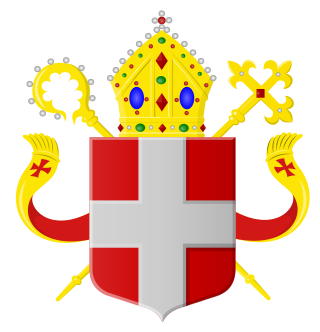
The Archdiocese of Utrecht is an archdiocese of the Latin Church of the Catholic Church in the Netherlands. The Archbishop of Utrecht is the metropolitan of the ecclesiastical province of Utrecht. There are six suffragan dioceses of the province: Roman Catholic Dioceses of Breda, of Groningen-Leeuwarden, of Haarlem-Amsterdam, of Roermond, of Rotterdam, and of 's-Hertogenbosch. The cathedral church of the archdiocese is Saint Catherine's Cathedral, which replaced the prior cathedral, Saint Martin's Cathedral after it was taken by Protestants in the Reformation.

Johannes de Jong was a Dutch Cardinal of the Roman Catholic Church. He served as Archbishop of Utrecht from 1936 until his death, and was elevated to the cardinalate in 1946 by Pope Pius XII.
The Holland Mission or Dutch Mission was the common name of a Catholic Church missionary district in the Low Countries from 1592 to 1853, during and after the Protestant Reformation in the Netherlands.

The Diocese of Haarlem–Amsterdam is a Latin diocese of the Catholic Church in the Netherlands. As one of the seven suffragans in the ecclesiastical province of the Metropolitan Archbishop of Utrecht, the diocesan territory comprises the north west of the Netherlands, including the cities of Haarlem and Amsterdam.
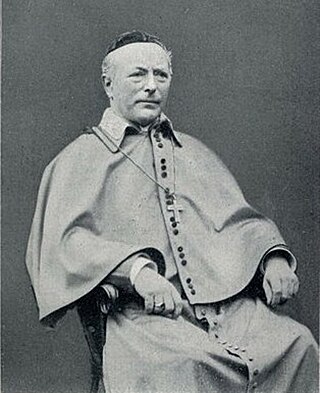
Gerardus Gul served as the seventeenth Archbishop of Utrecht from 1892 to 1920. He is known for his role in assisting the persons who would later found the Polish National Catholic Church in the United States, as well as for consecrating Arnold Harris Mathew, the founder and first bishop of the Old Catholic Church in Great Britain.

The Lordship of Utrecht was formed in 1528 when Charles V of Habsburg conquered the Bishopric of Utrecht, during the Guelders Wars.

Dominique-Marie Varlet was a French prelate and missionary of the Catholic Church who served as vicar general of the Diocese of Quebec. Later, as the Roman Catholic Bishop of Babylon, he was involved in a schism within the Roman Catholic Church by consecrating four men successively as Archbishop of Utrecht.

The Old Catholic Archdiocese of Utrecht is an archdiocese within the Old Catholic Church of the Netherlands which split from the Archdiocese of Utrecht officially in 1723 because of the illicit consecration of Cornelius van Steenoven to the episcopate.
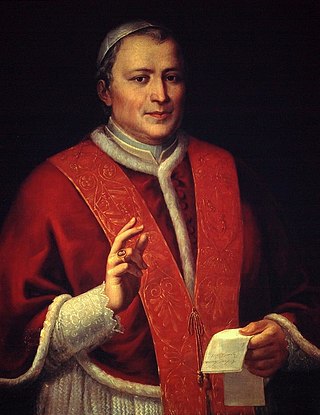
On 4 March 1853, Pope Pius IX restored the episcopal hierarchy in the Netherlands with the papal bull Ex qua die arcano, after the Dutch Constitutional Reform of 1848 had made this possible. The re-establishment of the episcopal hierarchy led to the April movement protest in 1853.
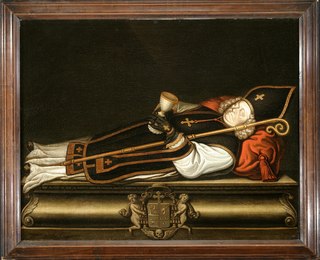
Cornelis van Steenoven was a Dutch Roman Catholic priest who later served as the seventh Old Catholic Archbishop of Utrecht from 1724 to 1725. Consecrated without the permission of the pope, Steenoven was at the center of the 18th-century controversy between national churches and what many considered to be the overreaching powers of the papacy.
Cornelius Johannes Barchman Wuytiers served as the Old Catholic Archbishop of Utrecht from 1725 to 1733.

Petrus Johannes Meindaerts served as the tenth Archbishop of Utrecht from 1739 to 1767. After the death of his consecrator, Bishop Dominique Marie Varlet, Meindaerts consecrated other bishops, such that all later Old Catholic bishops derive their apostolic succession from him, as the bishops before him died before they could consecrate others.

Walter Michael van Nieuwenhuisen served as the eleventh Archbishop of Utrecht from 1768 to 1797.
Johannes Jacobus van Rhijn served as the twelfth Archbishop of Utrecht from 1797 to 1808.
Willibrord van Os served as the thirteenth Archbishop of Utrecht from 1814 to 1825.

Johannes Heykamp served as the sixteenth Archbishop of Utrecht from 1875 to 1892. A learned theologian, Heykamp is most remembered for summoning the conference that led to the Declaration of Utrecht.
Franciscus Kenninck served as the eighteenth Archbishop of Utrecht from 1920 to 1937.












